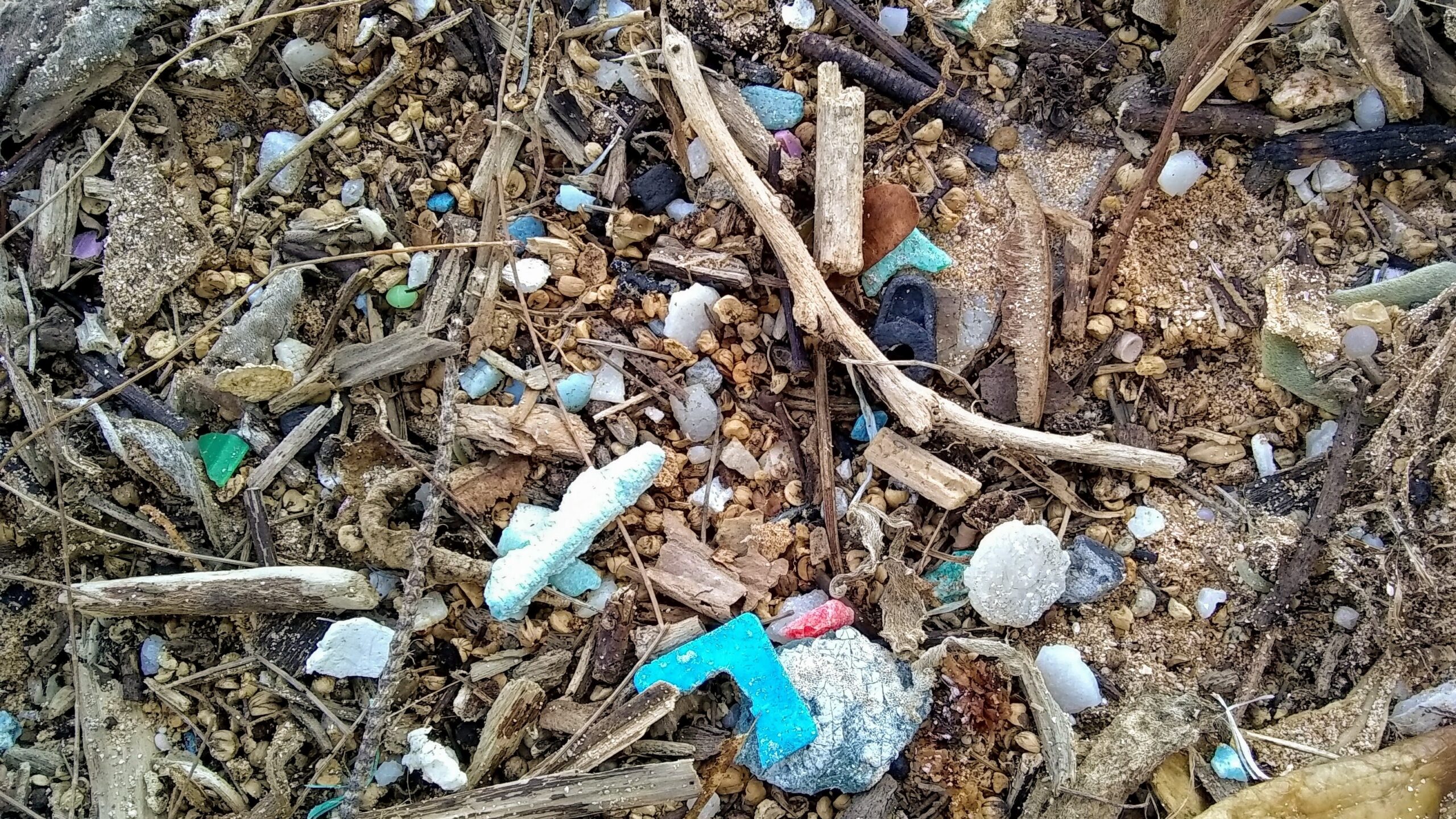Back on the island, joining Surfrider Kauai for beach cleanups, I’m more shocked than ever by the amount of plastic washing up on shores where, just a decade ago, I could bury my body in clean, unadulterated sand. The plastic is smaller now, as the shifting currents have pushed much of the Great Pacific Garbage Patch toward California. Less in quantity, perhaps, but mostly just more broken down. At least back then, it was easy to spot the nets, fishing traps, toothbrushes, flip flops, and occasional mattresses or tires brought to shore by that one of many soupy islands of trash now floating in the navel of the Earth. But now, we’re left with their essence: microplastics smashed and scattered by the waves, too small to ever sift from the sand again. Look closely, and the beaches glitter blue and white. The fish and birds tend to eat the other colors, drawn to them against a backdrop of sky and sea. It’s hard to tell anymore what’s organic and what’s manmade. Shell or plastic? Coral or silicone? Bone or Styrofoam?
There is now enough plastic debris on the planet to cover a landmass the size of Argentina. Most of it was created in the past twenty years, the byproduct of single-use convenience—products we lived without until very, very recently. And since plastic begins with petroleum and fracked gas, I can’t help but think of the other corpses its creation requires—not just the marine life choking, drowning, or suffocating after oil spills, but also the people living in extraction zones, in low-income and Indigenous communities, where toxic waste and pollution breed cancers, asthma, and disease. All in the name of power and ease.
In Hawaiian culture, there are deeply rooted concepts for which I wish we had English equivalents:
Malama ‘Aina: To nurture the land so that it may provide for future generations.
Kuleana: Our reciprocal responsibility to our community, fulfilled with intent and diligence.
Kōkua: To selflessly and lovingly provide help.
Ho‘oponopono: To come together to resolve a crisis, restoring harmony and balance.
And so we don our gloves, gather our burlap sacks, and set out in silent contemplation, wondering: Can we possibly make a difference? But the truth is, at this point, it doesn’t matter how big a difference we make—doing nothing will only leave us buried in a mountain of capitalist regrets. There’s no choice but to fight the tide, to act on our kuleana—our duty for living on this Earth.
There’s also a Hawaiian proverb that feels particularly poignant in these changing times: I ka wā mamua, ka wā mahope—“The future is in the past.”
Every decision matters. Please limit your consumption of plastic.

Jess Lee
JESS LEEis an environmental & community advocate drawn to borders, ecotones, and the shadows between the lines. She was raised in the forests of Appalachia and lived for many years in Mexico, Hawaii and the Pacific Northwest. Her short stories and essays have been published in Cutthroat, Burnt Pine, The Humanist and Z Magazine.


Здравствуйте! Меня зовут Шестаков Юрий Иванович, я дерматолог с многолетним опытом работы в области эстетической медицины. Сегодня я отвечу на ваши запросы и поделюсь полезной информацией о лазерном удалении папиллом. Моя цель — помочь вам понять, как безопасно и эффективно избавиться от папиллом и какие преимущества имеет лазерное удаление.
Сколько времени занимает восстановление после лазерного удаления папиллом?
Восстановление после лазерного удаления папиллом обычно занимает от нескольких дней до недели. В течение этого времени рекомендуется избегать солнечного света, не трогать обработанную область и следовать всем указаниям врача для предотвращения осложнений.
How long is the recovery time after laser removal of papillomas?
Recovery after laser removal of papillomas usually takes from a few days to a week. During this time, it is recommended to avoid sunlight, not touch the treated area, and follow all doctor’s instructions to prevent complications.